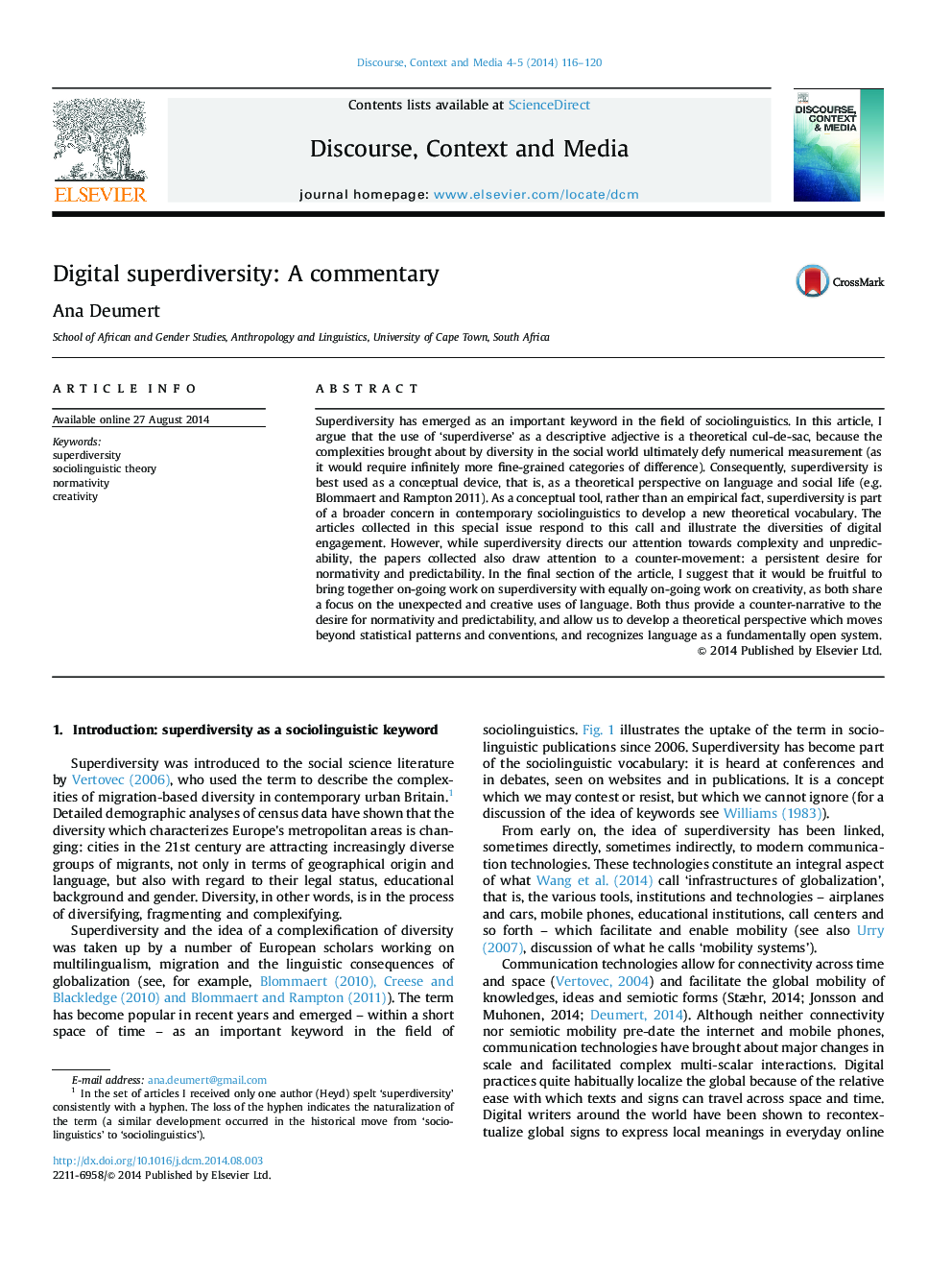| Article ID | Journal | Published Year | Pages | File Type |
|---|---|---|---|---|
| 1100590 | Discourse, Context & Media | 2014 | 5 Pages |
Superdiversity has emerged as an important keyword in the field of sociolinguistics. In this article, I argue that the use of ‘superdiverse’ as a descriptive adjective is a theoretical cul-de-sac, because the complexities brought about by diversity in the social world ultimately defy numerical measurement (as it would require infinitely more fine-grained categories of difference). Consequently, superdiversity is best used as a conceptual device, that is, as a theoretical perspective on language and social life (e.g. Blommaert and Rampton 2011). As a conceptual tool, rather than an empirical fact, superdiversity is part of a broader concern in contemporary sociolinguistics to develop a new theoretical vocabulary. The articles collected in this special issue respond to this call and illustrate the diversities of digital engagement. However, while superdiversity directs our attention towards complexity and unpredicability, the papers collected also draw attention to a counter-movement: a persistent desire for normativity and predictability. In the final section of the article, I suggest that it would be fruitful to bring together on-going work on superdiversity with equally on-going work on creativity, as both share a focus on the unexpected and creative uses of language. Both thus provide a counter-narrative to the desire for normativity and predictability, and allow us to develop a theoretical perspective which moves beyond statistical patterns and conventions, and recognizes language as a fundamentally open system.
